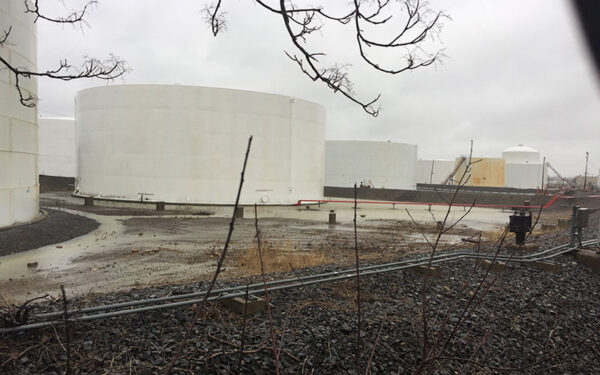
Towns across the state are taking climate action into their own hands. Photo Credit: Shutterstock.
As the federal government not only fails to tackle the global climate crisis, but actually obstructs progress to reduce the pollution that’s causing it, one bright spot has emerged: Local communities are stepping in to fill the growing federal climate gap.
Climate Mayors is a bi-partisan network of U.S. mayors working to lead local action on climate change and to uphold the goals of the Paris Climate Accord. It now counts more than 400 members from around the U.S. among its ranks, including mayors from every New England state. New Hampshire communities have joined the effort, too. Shortly after President Trump announced that he is pulling the U.S. out of the Paris Accord, several cities and towns in the Granite State joined the Climate Mayors network. Other communities are taking action to address climate-damaging emissions as well.
We’re proud to be working alongside many of these local communities, facilitating a roundtable to coordinate information- and idea-sharing to support their efforts.
Local Climate Action Leads to Unique Solutions
Not surprisingly, the approaches to tackling climate change at the local level are as varied as New Hampshire’s individual cities and towns. Some communities are focusing on being more efficient with their energy use, while others are focused on reducing waste. Many are emphasizing local clean energy – developing strategies to switch to fossil-free sources like solar and wind.
The City of Concord, for example, recently adopted a goal of supporting the entire community’s electricity needs with 100 percent renewable energy by 2030. This resolution is intended as a tool to guide future planning and the development of a strategic plan. In addition to the clean energy target, it includes the important goals that, by 2050, all heating and cooling needs will be met through renewable sources and 100 percent of the transportation system – from cars to trucks to buses – will be clean.
Many communities are also looking at how they can use less energy to power homes, businesses, and city services, which is another key way of addressing climate-damaging emissions. Claremont and Dover are just two cities that have upgraded to highly efficient street lights. Other energy efficiency measures, such as increasing building efficiency, are also priorities for many New Hampshire communities.
New Hampshire Cities and Towns Address Multiple Forms of Carbon Pollution
Beyond advancing local clean energy and energy efficiency, communities are addressing other sources of greenhouse gas pollution. On the issue of waste, which has an enormous climate footprint, the City of Claremont recently converted its recycling program back to multi-stream (as opposed to single-stream, which commingles many forms of waste, sometimes undermining recycling efforts), bumping its recycling rate up to 46 percent. Cities are also addressing the significant role of transportation in climate pollution, which is the largest and fastest growing source of climate-damaging emissions. For example, the City of Nashua recently launched an innovative, “smart,” dockless bike-share program – coordinated with public transit and additional bike lanes – that residents have embraced.
Perhaps less visible to the public, at least one New Hampshire community – the City of Lebanon – has made a critical investment in a full-time energy and facilities manager. This investment is not only leading to new solutions for reducing greenhouse gas emissions, but also saving the city money.
Tracking Progress to Bolster Success
It’s no mystery that tracking actions and monitoring their effectiveness is essential to the success of local efforts. On that score, the City of Keene serves as a strong example. The city set a goal in 2004 to reduce community-wide greenhouse gas emissions to 10 percent below 1995 levels by 2015, and to reduce municipal emissions by 20 percent in the same timeframe.
In a report documenting the results of its efforts, the City found that it fell short of its community-wide goal, cutting emissions by 2.8 percent. But on the municipal level, the City exceeded its goal – reducing emissions by 25 percent compared to 1995 levels. Keene’s efforts since 2004, combined with its detailed assessment of its results, are a valuable resource for other communities that have begun tackling greenhouse gas emissions more recently.
We’re excited to be working with New Hampshire communities like Claremont, Concord, Dover, Hanover, Keene, Lebanon, Nashua, and Portsmouth, that are committed to leading on climate action. And we’re pleased that other communities in New Hampshire and across New England are equally committed to the clean energy future we need. The task at hand is enormous and requires bold goals and even bolder actions. But with more and more communities engaging at the local level, the success of those bold actions – which collectively will add up to something even bigger – is entirely possible.



